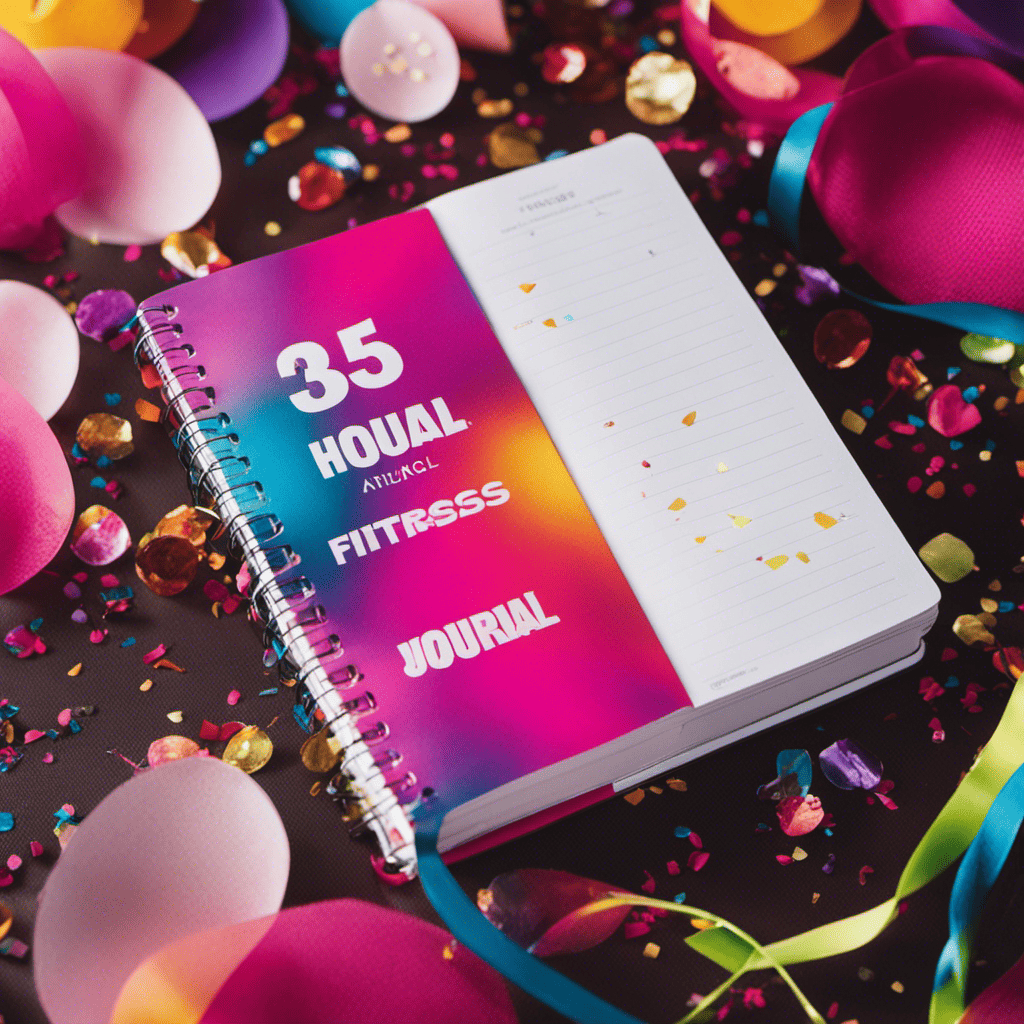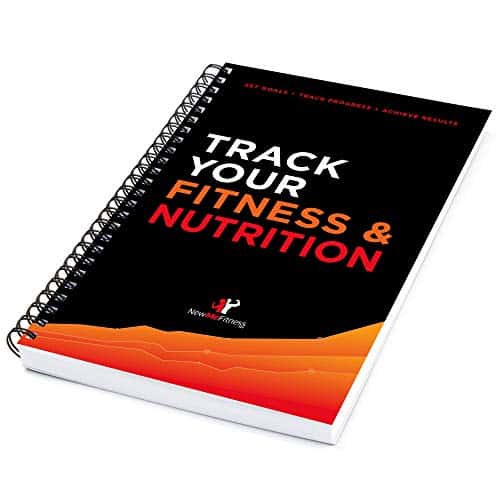- McRae, Priscilla Maiko (Author)
- English (Publication Language)
- 100 Pages - 06/30/2021 (Publication Date) - Independently published (Publisher)
Track Fitness and Nutrition Journal is a journal that helps you track your fitness goals and nutrition habits and practices.
Tracking your daily workouts, meals, water intake, mood, and more can be overwhelming. The Fitness and Nutrition Journal makes it easy to keep track of your progress with a simple to use journal template.
Start by setting your fitness goal. Each day you can then enter your meals, water intake, mood, workouts, and more. You can even customize your journal to track your progress for a specific goal. The My Fitness & Nutrition Journal gives you a simple way to stay on top of your personal fitness and nutrition.
How to use a Fitness and Nutrition Journal?

Create a new journal or open an existing one.
Click on the “Add New Entry” button at the top of your page, then type in the title for this entry.
Type in the date you want to start tracking workouts and nutrition. You can use today’s date if that works best for you. If not, choose another day when you will begin logging information about your fitness goals. For example, I like to log my workout sessions every Sunday to be fresh in my mind come Monday morning.
Choose how much detail you would like to include with each entry. The default options should work fine unless you have particular needs. In which case, click on the “Customize” tab and make any changes necessary.
Once you’ve made all of these selections, hit save. That’s it! Now you’re ready to get started.
To add more entries later, repeat steps 1-5 above.
When you first create a journal, there is no way to edit previous entries. However, once you’ve added some data into the system, you’ll be able to view them by clicking on the “View Entries” link located under the main menu bar. This allows you to see what you entered as well as any other details associated with those entries.
Set up your goal.
After creating your journal, go back to the home screen, where you can find the option to set your goal. Clicking on the “+ Add Goal” icon brings up a dialog box allowing you to select from several different types of goals. Choose whichever fits your lifestyle best. Once selected, fill out the rest of the fields provided.
Track your workouts.
Now that you know exactly what kind of exercise you plan to do, you need to figure out how many times per week you plan to perform the said activity. To help you accomplish this task, we provide a handy guide below. Follow along until you reach the number of days you’d like to complete during the specified time period.
Log your food.
The next step involves entering the foods you eat throughout the course of the day. It may seem daunting at first but don’t worry – it gets easier over time. Just pick a few key items and write down everything else. As long as you stick to the list, you won’t miss anything important.
For instance, let’s say you decide to try eating only whole grains for breakfast. Then you might also note that you had cereal for lunch. So now you have two things to remember: Whole-grain cereal + Lunch Breakfast. Easy peasy lemon squeezy, right?!
You can always change your diet after you’ve been using our app for a while.
Add notes about how you feel each day. For example, “I’m feeling good today.”
If you notice something unusual or interesting while tracking your activities and meals, you can enter an additional comment here. These comments aren’t saved anywhere permanently; however, they allow us to keep better tabs on your progress.
Enter food consumed during the day.
This part isn’t too difficult either. All you really need to do is record the item’s name, the amount eaten, and whether you ate alone or shared the meal with someone else.
Track workout sessions.
We recommend tracking both cardio and strength training in one journal so you can easily compare results between the two categories. You can choose to log every session or use the calendar feature to mark off when you performed certain exercises. Either method works great.
Record sleep habits.
Sleep plays such a huge role in overall health and fitness, so it makes sense to document it separately if you want to learn more about why getting enough shut-eye matters.
Keep yourself motivated.
It’s easy to lose motivation if you start seeing little improvements in your weight loss efforts. Fortunately, you can quickly boost your confidence levels by looking at your past performance. By reviewing old journals, you can see how far you’ve come since starting your journey. Seeing success stories helps motivate you to continue working toward reaching your ultimate goal.
Get support.
Our community forums are filled with people who share their experiences and advice on topics ranging from nutrition to general wellness. We encourage everyone to participate in discussions whenever possible.
Stay organized.
Keep your journal neat by labeling sections appropriately. Use color coding to separate different aspects of your life. And finally, don’t forget to tag your photos! Tags allow you to search through thousands of images based on keywords.
Share your story.
Once you’re done keeping up with your own personal goals, we’d love to hear yours. Tell us what motivates you to stay fit and healthy, and maybe even inspire others along the way.
Start small.
Don’t get overwhelmed just because this process seems like a lot of work. Remember, there’s no reason to wait until tomorrow to make changes. The sooner you begin making positive lifestyle choices, the faster you’ll reach your final destination.
Be patient.
Remember, this doesn’t happen overnight. Tracking your daily intake will take some practice before you become comfortable doing it regularly. But once you find your groove, you’ll be amazed at all the benefits you experience.
Celebrate milestones.
There’s nothing wrong with taking pride in your accomplishments. After all, you worked hard to achieve them. Take advantage of any opportunities you receive to celebrate your successes. Whether it means sharing pictures of your new physique online or simply treating yourself to a delicious dessert, celebrating your achievements goes a long way towards boosting self-esteem.
Don’t sweat the small stuff.
As tempting as it may be to obsessively scrutinize every detail of your routine, resist the urge. Instead, focus on the big picture. When you look back at your entire journey, you’ll realize that minor details didn’t matter much anyway. What mattered was that you stuck with it. That’s truly impressive.
Enjoy the ride.
If you follow these 15 tips for tracking your progress, you won’t have to worry too much about whether you’re meeting your goals. You’ll know exactly where you stand, which is half the battle when it comes to achieving anything worthwhile. So go ahead and enjoy the journey—you deserve it after all those years spent slaving away over the stove.
Have fun.
We hope you enjoyed reading our list of 16 ways to track your progress during your fitness journey. As always, feel free to ask questions below, and remember to keep an open mind while following these guidelines. Good luck!
How do I track my food?
Tracking your diet isn’t difficult. Write down everything you eat and drink throughout the day. This includes meals, beverages, supplements, vitamins, herbs, etc. Make sure to include calorie counts and other important information, including serving sizes.
Is it necessary to weigh myself each time?
Yes, weighing yourself is essential. It gives you insight into your body composition and determines if you need to adjust your workout regimen. However, you shouldn’t rely solely on numbers; instead, use scales and measurements to ensure accuracy. For example, measuring your waist circumference provides valuable data regarding fat distribution.
Do I really need to measure my blood pressure?
Absolutely. Blood pressure readings provide vital insights into your cardiovascular system. They can also help identify potential health problems such as high cholesterol levels or heart disease. In addition, they give you a sense of how well your workouts are affecting your overall wellness.
Can I skip recording my sleep habits?
No. Sleep plays a crucial role in maintaining optimal physical performance. Without adequate rest, you could suffer from fatigue, mood swings, decreased energy, poor concentration, increased stress, weight gain, and depression. Therefore, you must record your sleeping patterns so you can monitor their impact on your overall wellbeing.
Should I count calories?
It depends. Some people believe counting calories helps them lose weight more quickly than others who don’t bother keeping tabs on what they consume. Others claim that counting calories actually makes them overeat by encouraging them to snack excessively between meals. Ultimately, however, most experts agree that calorie consumption should not significantly determine one’s success rate. Rather, focusing on eating healthy foods and exercising consistently is far more beneficial.
Does exercise affect my appetite?
Exercise does indeed influence hunger hormones, but only temporarily. Ghrelin increases immediately upon starting a session, then decreases within 30 minutes. Exercise has been shown to suppress ghrelin production up to two hours post-workout. While this might seem counterintuitive, research suggests that suppressing ghrelin serves as a natural “reward” mechanism designed to prevent excessive caloric consumption.
Conclusion
In conclusion, there are many different methods for tracking your fitness goals. The key is finding something that works best for you. Track Fitness and Nutrition Journal is a straightforward solution that can help you Reach Your Goals Faster!
As a veteran fitness technology innovator and the founder of GearUpToFit.com, Alex Papaioannou stands at the intersection of health science and artificial intelligence. With over a decade of specialized experience in digital wellness solutions, he’s transforming how people approach their fitness journey through data-driven methodologies.
Last update on 2025-07-15 / Affiliate links / Images from Amazon Product Advertising API

